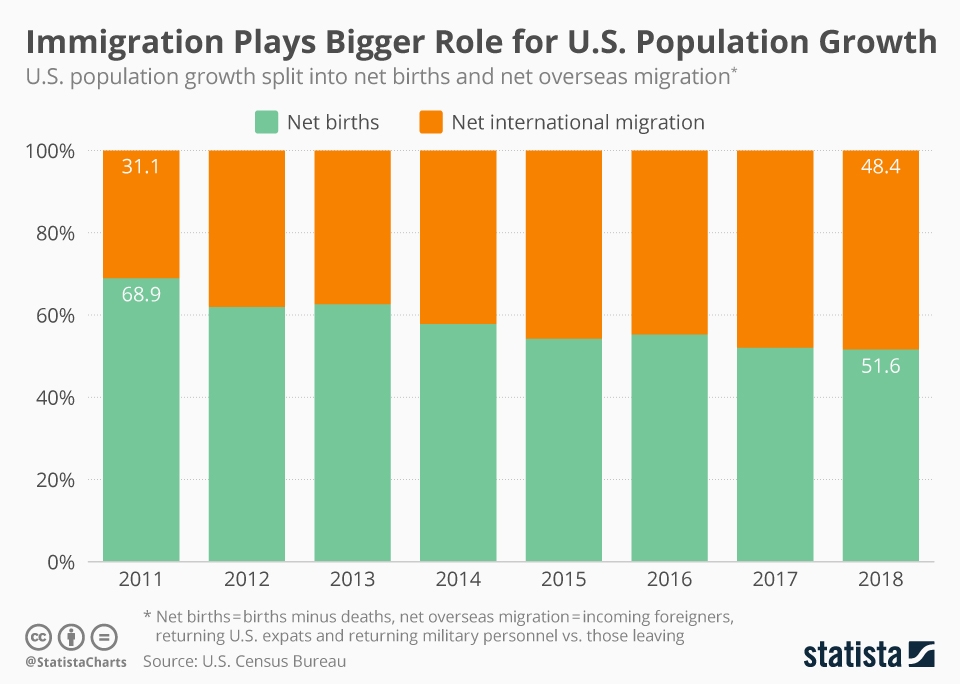The U.S. population is growing by more than two million people ever year. While this number has fluctuated during the last decade, the make-up of new inhabitants has changed gradually in the same time period. Immigration is responsible for an ever-increasing share of U.S. population growth, as shown in figures by the U.S. Census Bureau.
In 2011, only around 30 percent of U.S. population growth was due to net international migration, which is the number of people moving to the U.S. minus the people leaving it. In 2018, this number had increased to more than 48 percent. Net births, the number of births in the U.S. minus the number of deaths, have had a diminishing impact on population growth, its share being 51 percent in 2018, down from 69 percent in 2011.
U.S. population growth hit an 80-year low in 2018, but birth rates and overall growth are still above those of aging societies like Japan, Germany or Spain. These countries are currently experiencing the negative effects of aging and decreasing populations, like falling labor market participation, labor shortages and strain on social systems. Since the U.S. fertility rate is also in decline and has now been falling for the fourth year in a row, as recently announced by the government, immigration is bound to play an even bigger role in U.S. population growth in the future.





















